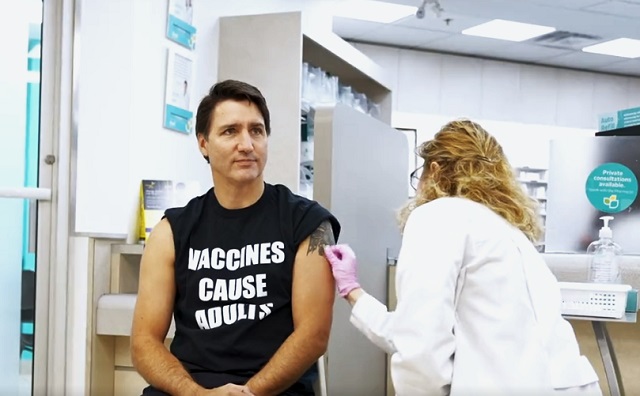MAiD
Official data shows euthanasia deaths in Canada rose significantly in 2023

From LifeSiteNews
Medical Assistance in Dying (MAiD) increased 42% in 2023 in Quebec alone.
Deaths of Canadians by state-approved euthanasia have risen sharply in most provinces according to recent data, with approximately 16,000 people dying in 2023 alone, a significant increase from 2022 and an “out of control” rate, the nation’s leading anti-euthanasia advocacy group warned.
Official MAiD data from Ontario, Quebec, and Alberta shows the shocking level of deaths. In 2022, there were 13,241 Canadians who died by MAiD.
According to data from the Quebec Commission on End-of-Life Care’s eighth annual report, 5,211 people died by MAiD from April 1, 2022, to March 31, 2023, which is a large increase from 3,663 in the previous reporting period.
Alex Schadenberg, executive director of the Euthanasia Prevention Coalition (EPC), wrote in a recent blog that he predicts that 60,000 Canadians have died by MAiD since the deadly practice was legalized in 2016, with the rate increasing every year.
“Euthanasia is out of control in Canada,” Schadenberg said.
The EPC noted that deaths in Quebec from MAiD increased 42% in 2023, accounting for 6.8% of all deaths in the province. The report also shows that from April 1 to June 30, 2023, the number of MAiD deaths in the province went up 24%, which the EPC noted is “a slower pace of growth, but substantial considering the massive number of euthanasia deaths.”
The EPC also reflected that “Shockingly, 15% of those who died by euthanasia in Quebec were not terminally ill.”
MAiD data from Ontario released late last year shows there were 4,641 deaths in 2023, an 18% increase from 3,924 in 2022.
Data from Alberta shows that since June 2016 there have been 3,914 reported deaths by MAiD. However, 977 were in 2023, which is an 18% increase from 836 in 2022, or 594 in 2021.
Most MAiD deaths in Canada are done by a “doctor or nurse injecting a person, usually upon request, with a lethal poison cocktail,” the EPC noted.
Assisted suicide, the EPC says, is much less common and “is done by a doctor or nurse prescribing a person, usually upon request, a lethal poison cocktail that the person would take themselves.”
Last week, notably after pushback from pro-life, medical, and mental health groups as well as most of Canada’s provinces, the federal government under Prime Minister Justin Trudeau delayed its planned expansion of euthanasia to those suffering solely from mental illness to 2027.
Canadian Health Minister Mark Holland and Justice Minister Arif Virani announced the delay but said the government is still fully committed to expanding MAiD.
The delay was welcomed by the Euthanasia Prevention Coalition, but Schadenberg told LifeSiteNews that euthanasia “should be scrapped altogether.”
“We will be active in the next election reminding voters of the Members of Parliament who voted against Bill C-314 last fall, a bill that would have scrapped euthanasia for mental illness,” Schadenberg said.
Campaign Life Coalition (CLC) said that Canadians need “compassionate care, not killing,” and has urged Trudeau’s federal government to permanently scrap, not just delay, its planned expansion of euthanasia to those suffering from mental illness.
The Conservative Party of Canada (CPC) under leader Pierre Poilievre is supportive of the pause but wants the expansion of MAiD to be dropped altogether.
The CPC has opposed the expansion of MAiD, but recent attempts to stop the grim procedure, such as through Bill C-314, have failed.
The current delay is the second time the expansion has been put on hold.
Originally set to go into effect in March 2023, pressure from the same groups led the Liberals under Trudeau to delay Bill C-39.
The original delay in expanding MAiD until 2024 also came after numerous public scandals, including the surfacing of reports that Canadian veterans were being offered the fatal procedure by workers at Veterans Affairs Canada (VAC).
International
New York Times publishes chilling new justification for assisted suicide

From LifeSiteNews
Even happy, healthy lives without major issues can warrant needless ending if they are ‘complete.’
Notorious secular “ethicist” Peter Singer has co-authored an opinion piece in The New York Times positing a chilling new rationale for assisted suicide: the determination that one’s life is simply “complete.”
Princeton psychologist Daniel Kahneman died in March 2024 at age 90. His cause of death was not disclosed at the time, but a year later, The Wall Street Journal revealed that Kahneman had emailed friends the day before to tell them he was traveling to Switzerland to avail himself of the country’s legal physician-assisted suicide.
“I think Danny wanted, above all, to avoid a long decline, to go out on his terms, to own his own death,” WSJ journalist and longtime friend of the deceased Jason Zweig wrote. “Maybe the principles of good decision-making that he had so long espoused — rely on data, don’t trust most intuitions, view the evidence in the broadest possible perspective — had little to do with his decision.”
On April 14, The New York Times published a guest essay by the infamous Singer, a pro-infanticide Princeton bioethics professor, and philosophy professor Katarzyna de Lazari-Radek, who shared that they too knew of Kahneman’s plans and that days before he had told them, “I feel I’ve lived my life well, but it’s a feeling. I’m just reasonably happy with what I’ve done. I would say if there is an objective point of view, then I’m totally irrelevant to it. If you look at the universe and the complexity of the universe, what I do with my day cannot be relevant.”
“I have believed since I was a teenager that the miseries and indignities of the last years of life are superfluous, and I am acting on that belief,” Kahneman reportedly said. “I am still active, enjoying many things in life (except the daily news) and will die a happy man. But my kidneys are on their last legs, the frequency of mental lapses is increasing, and I am 90 years old. It is time to go.”
Singer and de Lazari-Radek argued that this was an eminently reasonable conclusion. “(I)f, after careful reflection, you decide that your life is complete and remain firmly of that view for some time, you are the best judge of what is good for you,” they wrote. “This is especially clear in the case of people who are at an age at which they cannot hope for improvement in their quality of life.”
“(I)f we are to live well to the end, we need to be able to freely discuss when a life is complete, without shame or taboo,” the authors added. “Such a discussion may help people to know what they really want. We may regret their decisions, but we should respect their choices and allow them to end their lives with dignity.”
Pro-lifers have long warned that the euthanasia movement devalues life and preys on the ill and distraught by making serious medical issues (even non-terminal ones) into grounds to end one’s life. But Singer and de Lazari-Radek’s essay marks a new extreme beyond that point by asserting that even happy, healthy lives without major issues can warrant needless ending.
“Instead of seeing every human life as having inherent value and dignity, Singer sees life as transactional: something you are allowed to keep by being happy, able-bodied, and productive — and something to be taken away if you are not,” Cassy Cooke wrote at Live Action News.
In America, nine states plus the District of Columbia currently allow assisted suicide. In March, Delaware took a step closer to becoming the 10th with its own legalization bill, although it has yet to become law. Another bill recently failed in Maryland.
Support is available to talk those struggling with suicidal thoughts out of ending their lives. The Suicide & Crisis Lifeline can be reached by calling or texting 988.
Business
‘Great Reset’ champion Klaus Schwab resigns from WEF

From LifeSiteNews
Schwab’s World Economic Forum became a globalist hub for population control, radical climate agenda, and transhuman ideology under his decades-long leadership.
Klaus Schwab, founder of the World Economic Forum and the face of the NGO’s elitist annual get-together in Davos, Switzerland, has resigned as chair of WEF.
Over the decades, but especially over the past several years, the WEF’s Davos annual symposium has become a lightning rod for conservative criticism due to the agendas being pushed there by the elites. As the Associated Press noted:
Widely regarded as a cheerleader for globalization, the WEF’s Davos gathering has in recent years drawn criticism from opponents on both left and right as an elitist talking shop detached from lives of ordinary people.
While WEF itself had no formal power, the annual Davos meeting brought together many of the world’s wealthiest and most influential figures, contributing to Schwab’s personal worth and influence.
Schwab’s resignation on April 20 was announced by the Geneva-based WEF on April 21, but did not indicate why the 88-year-old was resigning. “Following my recent announcement, and as I enter my 88th year, I have decided to step down from the position of Chair and as a member of the Board of Trustees, with immediate effect,” Schwab said in a brief statement. He gave no indication of what he plans to do next.
Schwab founded the World Economic Forum – originally the European Management Forum – in 1971, and its initial mission was to assist European business leaders in competing with American business and to learn from U.S. models and innovation. However, the mission soon expanded to the development of a global economic agenda.
Schwab detailed his own agenda in several books, including The Fourth Industrial Revolution (2016), in which he described the rise of a new industrial era in which technologies such artificial intelligence, gene editing, and advanced robotics would blur the lines between the digital, physical, and biological worlds. Schwab wrote:
We stand on the brink of a technological revolution that will fundamentally alter the way we live, work, and relate to one another. In its scale, scope, and complexity, the transformation will be unlike anything humankind has experienced before. We do not yet know just how it will unfold, but one thing is clear: the response to it must be integrated and comprehensive, involving all stakeholders of the global polity, from the public and private sectors to academia and civil society …
The Fourth Industrial Revolution, finally, will change not only what we do but also who we are. It will affect our identity and all the issues associated with it: our sense of privacy, our notions of ownership, our consumption patterns, the time we devote to work and leisure, and how we develop our careers, cultivate our skills, meet people, and nurture relationships. It is already changing our health and leading to a “quantified” self, and sooner than we think it may lead to human augmentation.
How? Microchips implanted into humans, for one. Schwab was a tech optimist who appeared to heartily welcome transhumanism; in a 2016 interview with France 24 discussing his book, he stated:
And then you have the microchip, which will be implanted, probably within the next ten years, first to open your car, your home, or to do your passport, your payments, and then it will be in your body to monitor your health.
In 2020, mere months into the pandemic, Schwab published COVID-19: The Great Reset, in which he detailed his view of the opportunity presented by the growing global crisis. According to Schwab, the crisis was an opportunity for a global reset that included “stakeholder capitalism,” in which corporations could integrate social and environmental goals into their operations, especially working toward “net-zero emissions” and a massive transition to green energy, and “harnessing” the Fourth Industrial Revolution, including artificial intelligence and automation.
Much of Schwab’s personal wealth came from running the World Economic Forum; as chairman, he earned an annual salary of 1 million Swiss francs (approximately $1 million USD), and the WEF was supported financially through membership fees from over 1,000 companies worldwide as well as significant contributions from organizations such as the Bill & Melinda Gates Foundation. Vice Chairman Peter Brabeck-Letmathe is now serving as interim chairman until his replacement has been selected.
-

 2025 Federal Election2 days ago
2025 Federal Election2 days agoStudy links B.C.’s drug policies to more overdoses, but researchers urge caution
-

 Business2 days ago
Business2 days agoIs Government Inflation Reporting Accurate?
-

 2025 Federal Election2 days ago
2025 Federal Election2 days agoCarney’s Hidden Climate Finance Agenda
-

 2025 Federal Election2 days ago
2025 Federal Election2 days agoWhen it comes to pipelines, Carney’s words flow both ways
-

 2025 Federal Election1 day ago
2025 Federal Election1 day agoPolls say Canadians will give Trump what he wants, a Carney victory.
-

 2025 Federal Election1 day ago
2025 Federal Election1 day agoThe Anhui Convergence: Chinese United Front Network Surfaces in Australian and Canadian Elections
-

 2025 Federal Election16 hours ago
2025 Federal Election16 hours agoPoilievre Campaigning To Build A Canadian Economic Fortress
-

 Automotive15 hours ago
Automotive15 hours agoCanadians’ Interest in Buying an EV Falls for Third Year in a Row







